On our Journey, I’ve found myself really enjoying industrial World Heritage Sites. Although it’s not something I’d ever really considered, the World Heritage List has many factories, mills, mines, and company towns. There’s a lot to explore here, so let’s get into it: the best Industrial World Heritage Sites!
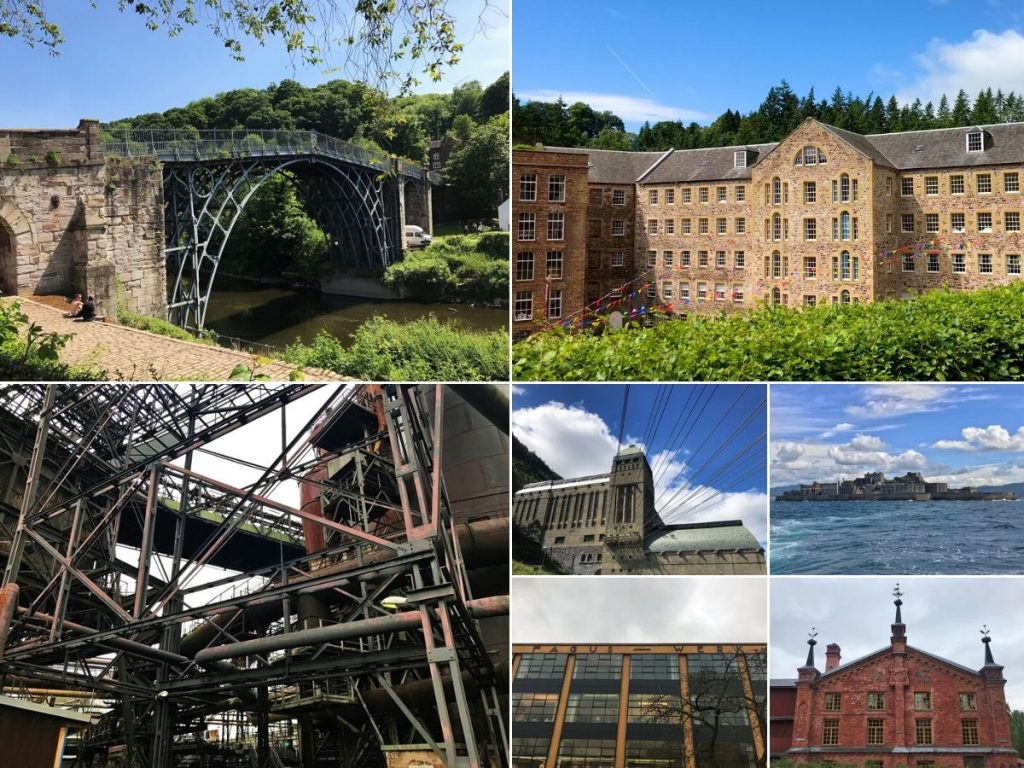
Völklingen Ironworks, Germany – World Heritage Site
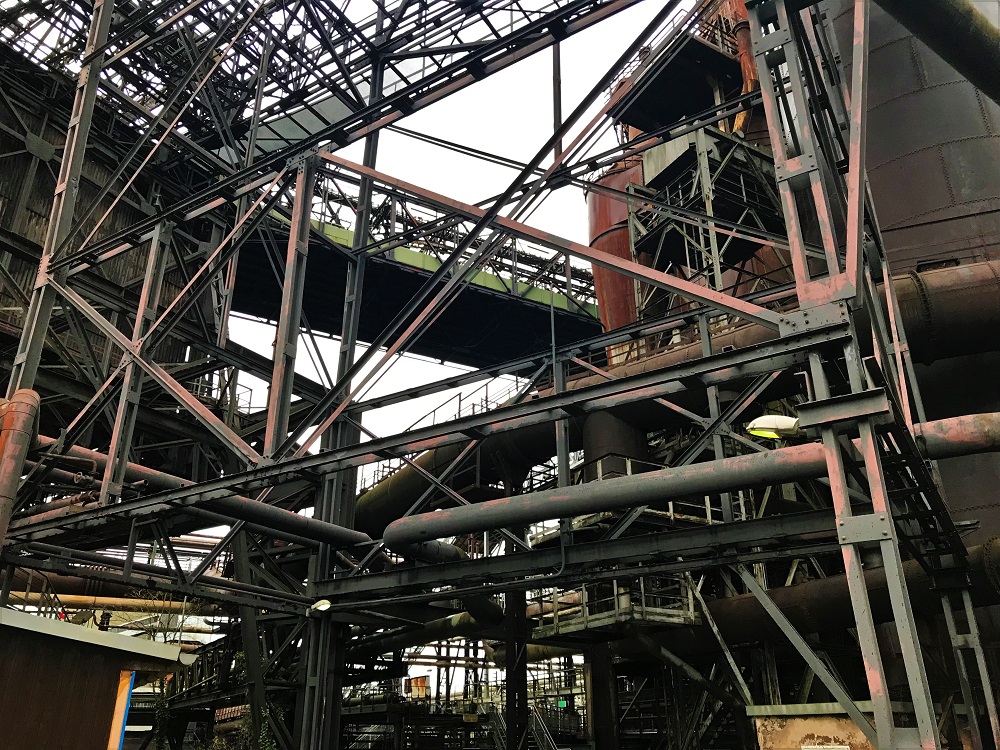
The Völklingen Ironworks, located in western Germany’s Saarland, is among my favourite industrial World Heritage sites. It opened in 1881, and was one of the reasons behind Germany’s enormous industrial output of the early 20th century. Völklingen’s big innovation was that it’s a complete facility, where every step of production happened in the same complex. Raw materials went in, manufactured goods came out.
During peacetime, these goods would include tools, sheet metal and other industrial products. But during wartime, the facility produced weapons, ammunition, helmets and other war materiel. Many POWs were illegally forced to work at Völklingen, and some managers later served jail sentences because of this practice.
These days, the site is a sprawling complex of rusting iron and twisted metal. Völklingen was too expensive to demolish after its closure in 1986, so it remained in place and is gradually being reclaimed by nature. It’s fantastic to see, and almost gives the place a post-apocalyptic vibe, which is really cool. On site there’s also a museum, an exhibition centre, and a science centre for kids.
Ironbridge Gorge, United Kingdom – World Heritage Site
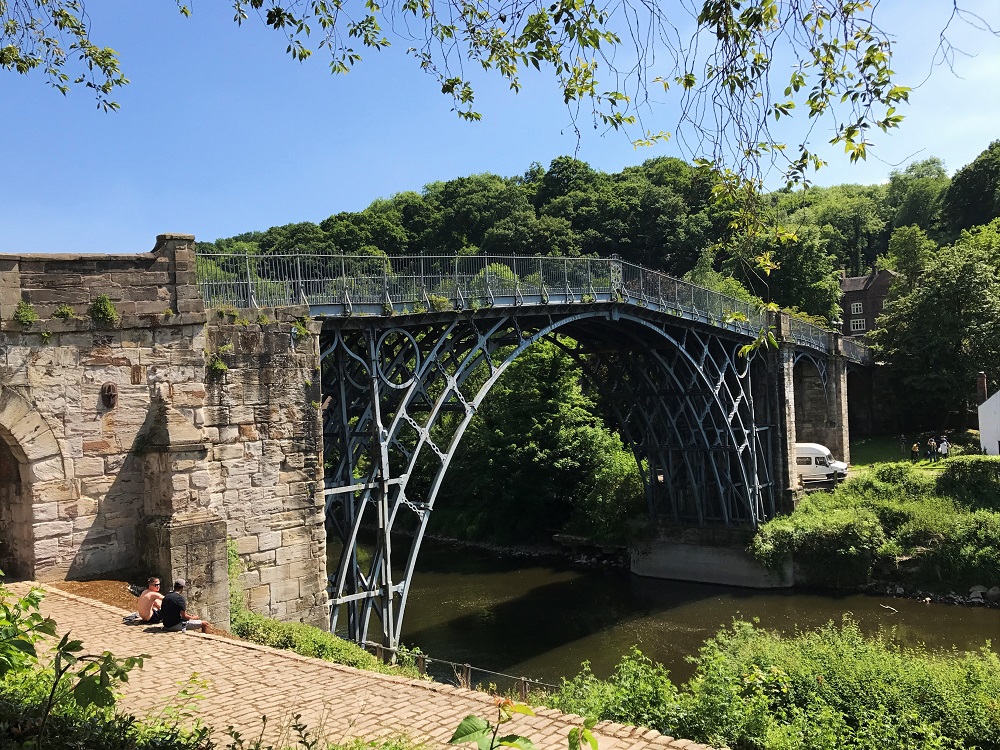
Have you ever wondered where the world’s oldest iron bridge is located? Wonder no more! It’s located right here at Ironbridge Gorge in Shropshire, England. Built in 1779, the creatively-named Iron Bridge was conceived as an advertisement for (and a monument to) locally-produced iron.
In the early 18th century, back in the very early stages of the Industrial Revolution, nearby smelters began producing iron using coking coal instead of charcoal to fire their furnaces. Suddenly freed of the need to cut down and burn hundreds of trees to keep blast furnaces running, iron production went into overdrive and the Industrial Revolution took off.
As the world’s first bridge built entirely of iron, it’s a truly remarkable achievement. It also had a significant impact on bridge-building, and many subsequent bridges were inspired by Iron Bridge. It’s a beautiful sight as well, with the graceful arch leaping between the steep cliffs on either side of the gorge.
These days, it’s a very peaceful and idyllic spot, and it’s hard to believe this would’ve once been a noisy, dirty place. Quite a few of the blast furnaces and smelters are still nearby and have been turned into museums, making the area a fantastic day trip.
Sites of Japan’s Industrial Revolution, Japan – World Heritage Site
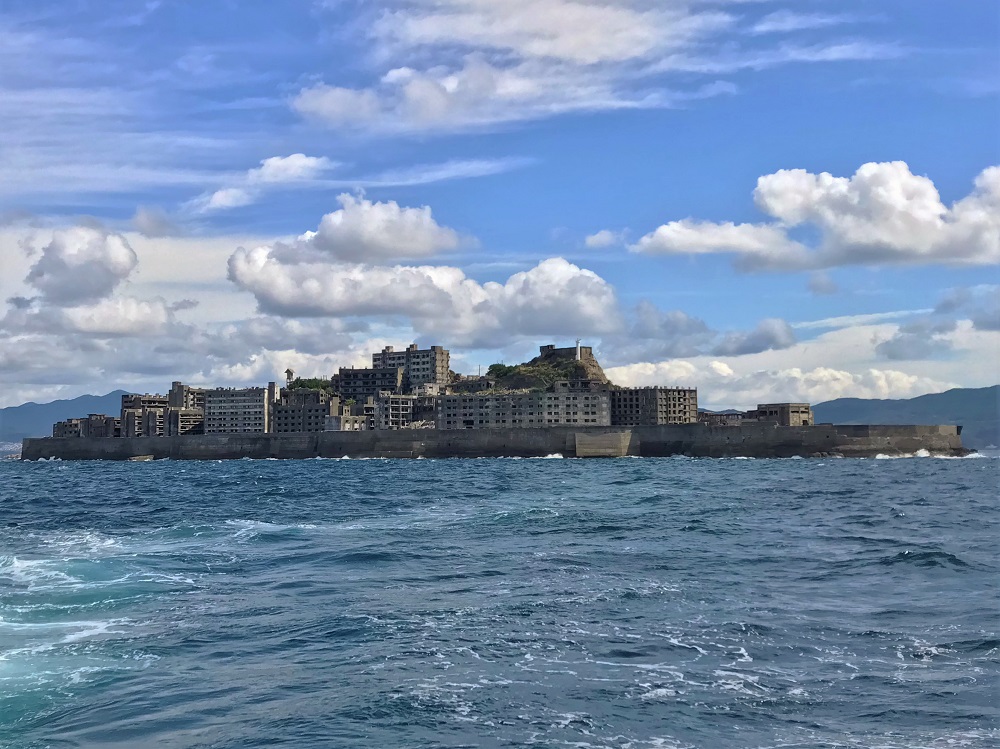
This industrial World Heritage site covers nine separate locations around Japan. Each spot relates to Japan’s rapid industrialisation of the late 19th century. During this period, railroads, factories, coalmines and shipyards were all constructed at an astounding rate.
The two main highlights of this site are located around the port city of Nagasaki in south-west Japan. Here you can find the Mitsubishi dockyard, which was once the largest shipbuilding facility in Japan. It’s here that Japan’s warships were built, including the famous Yamato flagship of World War 2. Many of the dockyards are still in use, though these days they mostly build cruise liners! There’s also an incredible cantilever crane that’s over 100 years old and still in working order.
Nearby, about 15 kilometres offshore is the famous Battleship Island, site of the former Hashima coal mine. This abandoned island was among Japan’s largest coal mines, and it was these high-technology mines that propelled Japan into the industrial era. It’s actually mind-boggling how many workers and communities they managed to fit on the island to keep the mine running. Over five thousand people were crammed onto the tiny island at one point. But there’s also a dark history here too. Sadly many Chinese prisoners and Korean conscripts suffered brutal treatment in the mines during the 1930s and 40s.
New Lanark, United Kingdom – World Heritage Site
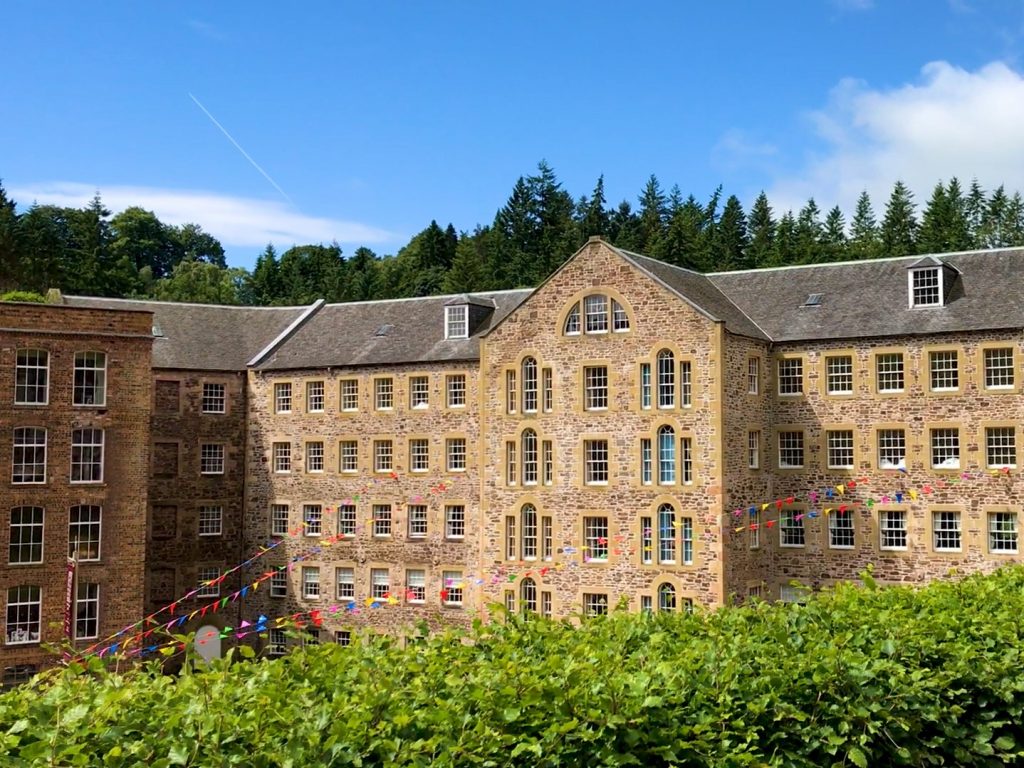
Located near Glasgow in Scotland, New Lanark is a similar industrial World Heritage Site to the Derwent Valley Mills site discussed above. Founded in the 1780s as a water-powered cotton mill, New Lanark became famous in the early 19th century under the direction of Robert Owen. Owen’s revolutionary idea was that happy workers would be more productive, and so New Lanark became a model of philanthropy and urban planning. New Lanark flourished thanks to the schools, housing, churches and other amenities that Owen constructed.
These days, the site is in a peaceful valley along the River Clyde, and makes for a fantastic day trip. You get an excellent sense of what living there in the 19th century must have been like, as the buildings there are all really well preserved. The living conditions wouldn’t have been great by modern standards, but they were certainly far removed from the Dickensian horrors we associate with the Industrial Revolution.
Crespi d’Adda, Italy – World Heritage Site
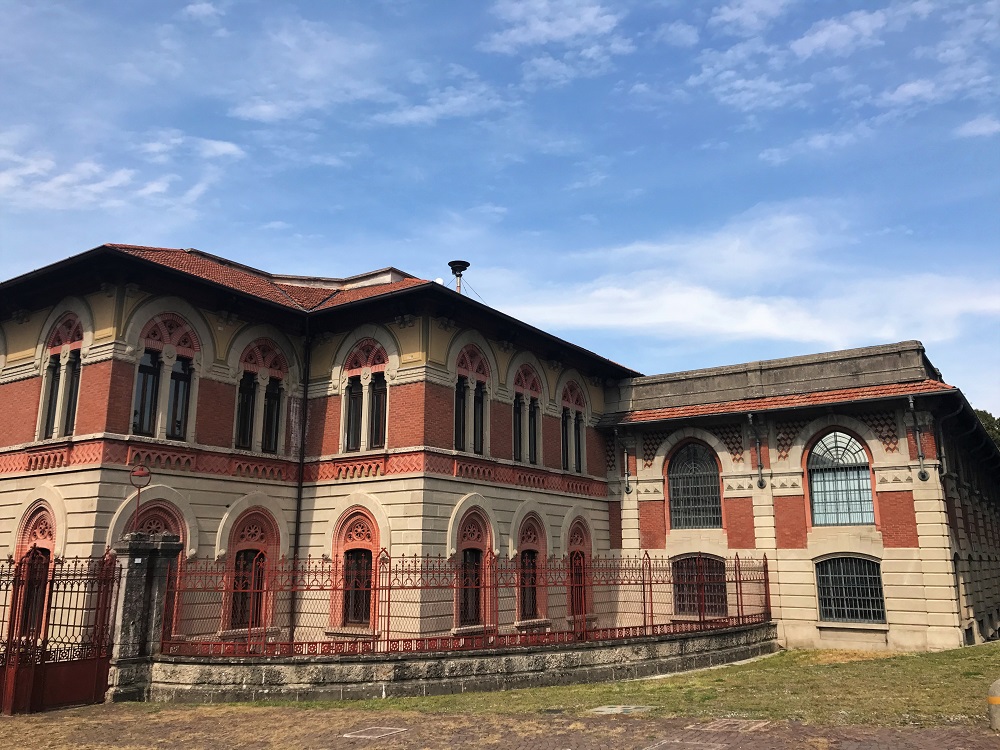
Crespi d’Adda is an historic company town in northern Italy, located on the banks of the Adda river. Cristoforo Crespi founded the town in the 1870s by setting up a cotton mill and later a village for his workers. In line with the modern ideas of the time, the company provided all necessary facilities for the workers, including a theatre, church, school buildings, clinic, and a wash-house as well.
In the 1890s, Cristoforo’s son Silvio added his own touches, like moving families into houses rather than apartments. Strikes were quite unusual, as the workers were well looked-after. The town is excellently preserved and still inhabited, as the mill didn’t shut down until 2004. In many cases the houses are occupied by descendants of the original workers!
Fagus Factory, Germany – World Heritage Site
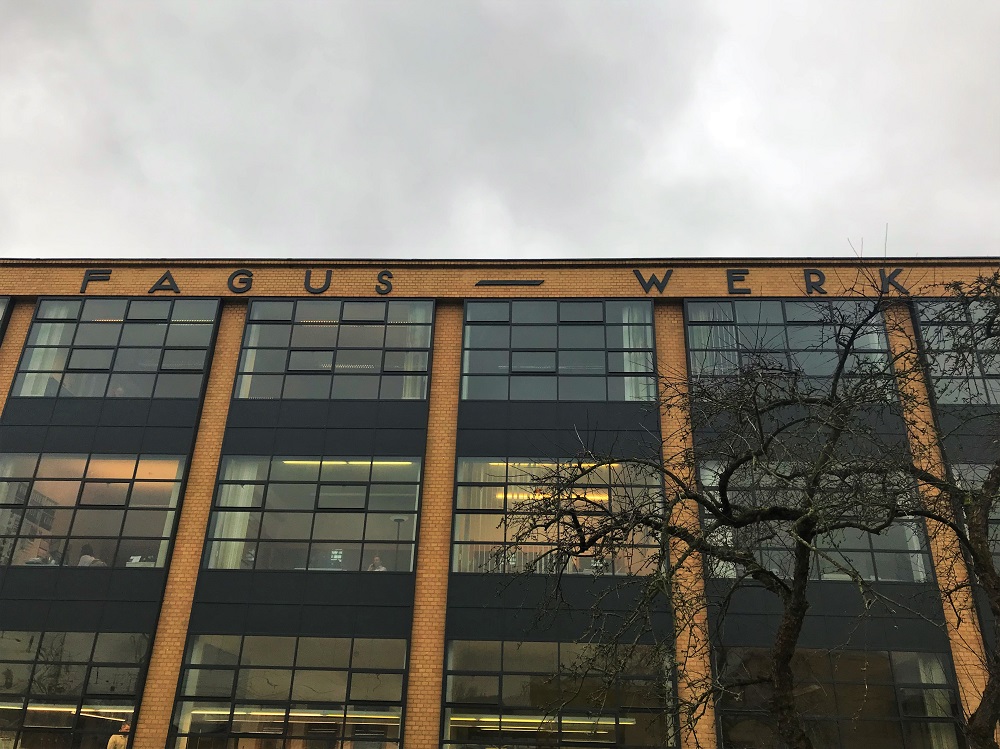
I’ve never really thought about how shoes are made. That is, until we visited the Fagus Factory site near Alfeld in central Germany. This factory produces “shoe lasts”; the moulds around which shoes are sewn. But it’s not the production process or the unusual products that are important here: it’s the building itself.
Walter Gropius designed the factory complex in 1911, and would later go on to found the influential Bauhaus school of design. This was his first major commission, and you can already see his ideas taking shape. The main building is an early example of “curtain wall” construction, where external walls aren’t holding the weight of the roof, and so can be made of light materials like glass. Although it’s still a working factory, this site is fascinating to visit! On weekends you can tour the factory, and otherwise there’s a fantastic exhibition in the former storage building behind the factory.
Derwent Valley Mills, United Kingdom – World Heritage Site
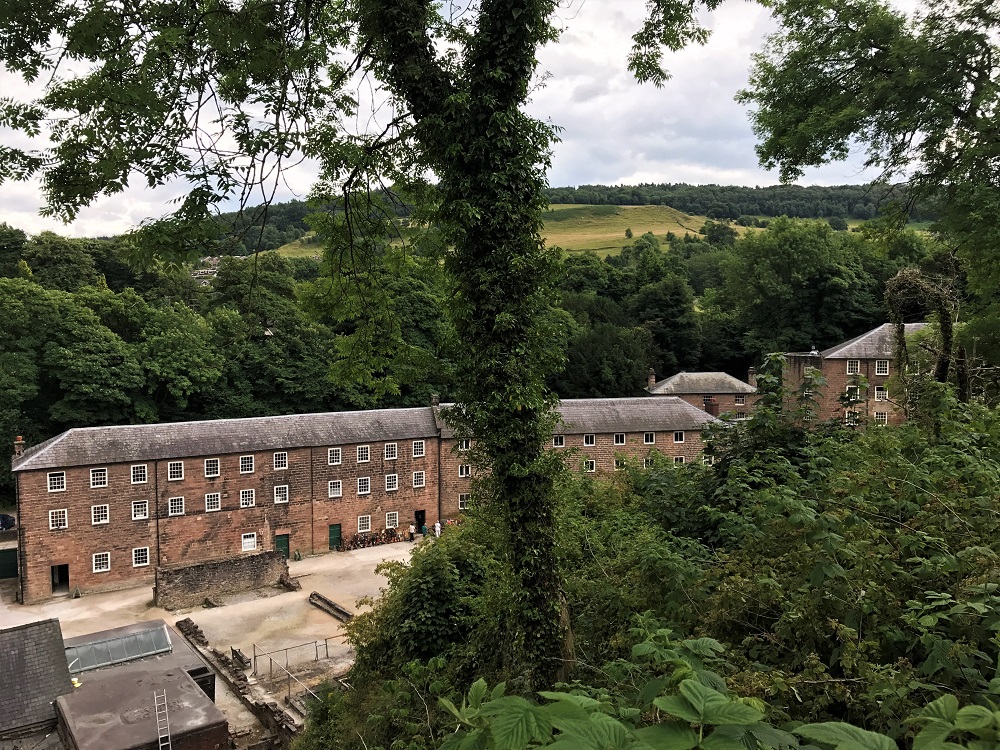
Next up is an unusual (but important!) site, located in a valley along the Derwent River in Derbyshire, England. It was here in 1774 that Richard Arkwright invented a water-powered cotton milling machine. This new machine allowed for continual cotton production, and importantly, only required unskilled workers. Essentially, it was the first modern factory – a hugely significant development.
Suddenly a whole town sprung up around the mill, with housing for workers, churches, schools and so on. Many of the original mill buildings are still here and still in excellent condition, making for a great day out. Even if you only have a passing interest in the history of cotton production, it’s definitely worth seeing the location of such a pivotal point in human history.
Engelsberg Ironworks, Sweden – World Heritage Site
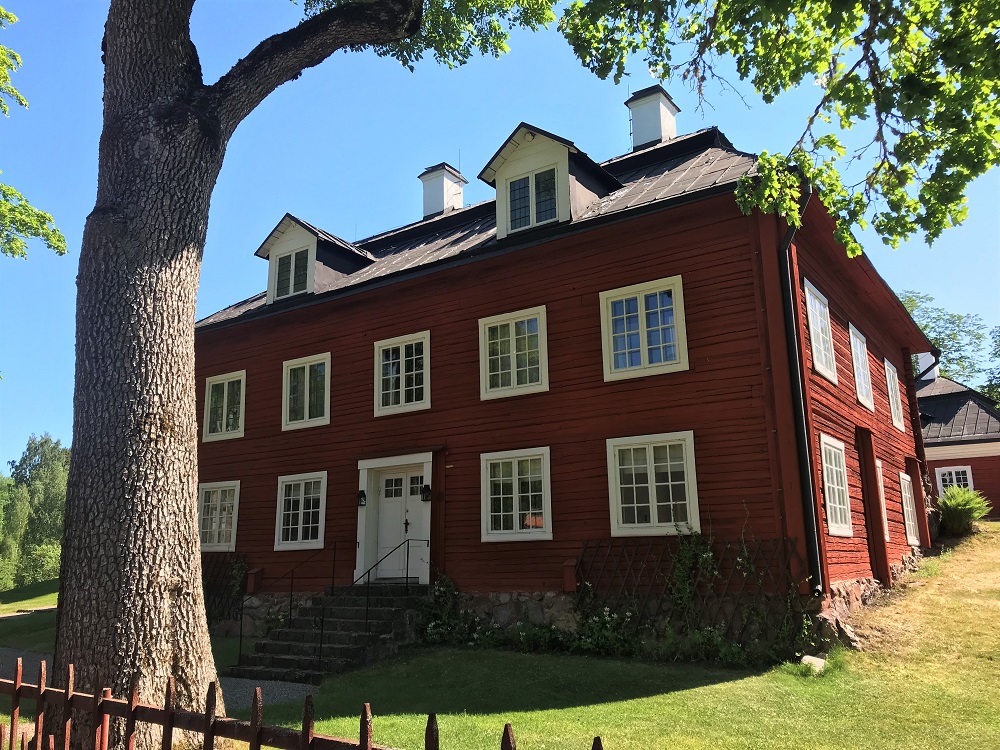
Surprisingly, during the 17th and 18th centuries, Sweden was one of the world’s leading producers of iron. And it’s largely because of sites like Engelsberg; small-scale ironworking operations that once dotted the countryside of southern Sweden. The ore was transported from mines elsewhere in Sweden, and the ironworks would process it into goods like tools and weapons.
These days the site is tucked away in an idyllic rural setting, surrounded by pine forests and a bubbling stream. The buildings are very tidy and well-maintained, and they’re all painted that gorgeous shade of copper red. During the summer you can tour the blast furnace and smelting buildings, and there’s also a manor house and other utility buildings nearby. It’s an interesting place to gain an insight into small-scale industrial production from the 18th and 19th centuries.
Falun Great Copper Mountain, Sweden – World Heritage Site
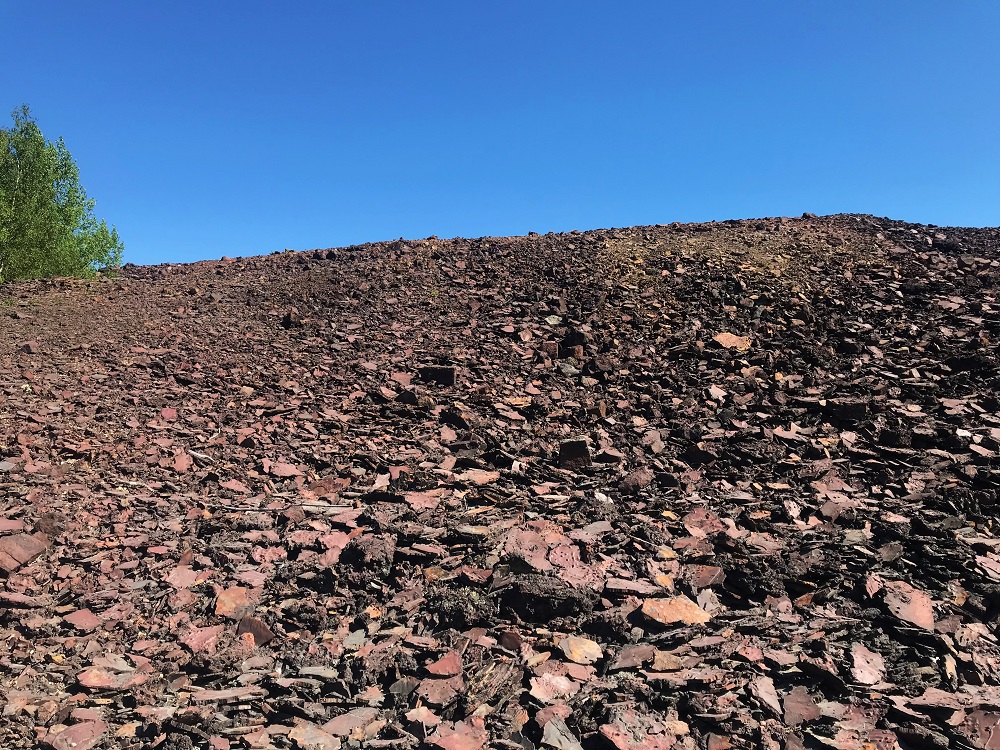
Moving back to Sweden, we arrive at the first of our mining industrial World Heritage sites (of which there’s a surprising number!). Falun is a huge old copper mine, and at one point produced over two thirds of Europe’s copper. Mining works started here over 1000 years ago and peaked in the 17th century. A massive collapse occurred in 1687, and most of the mining operations were shut down. No workers were killed, thanks to an unbelievable stroke of luck. The collapse happened on Midsummer’s Eve, one of the two days each year that the mine didn’t operate.
Up to that point, Falun had made Sweden extremely rich, and a major power in European politics. It’s also interesting to consider that the mine’s Charter of 1347 allocated shares to each miner, so they were personally invested in the mine’s profits. In many ways, it was the precursor to modern companies listing on the stockmarket!
Production finally ceased in 1992 and these days the site is a museum. It’s a fascinating place to visit with the enormous yawning mine pit, and the beautiful office buildings that now house the museum. And if you’re familiar with Scandinavian buildings, you’ve undoubtedly seen those iconic copper-red painted farmhouses and other buildings. That beautiful, rich coppery red colour is known as “Falun red“, and it’s still produced by a factory nearby using waste products from the mine.
Rjukan / Notodden, Norway – World Heritage Site
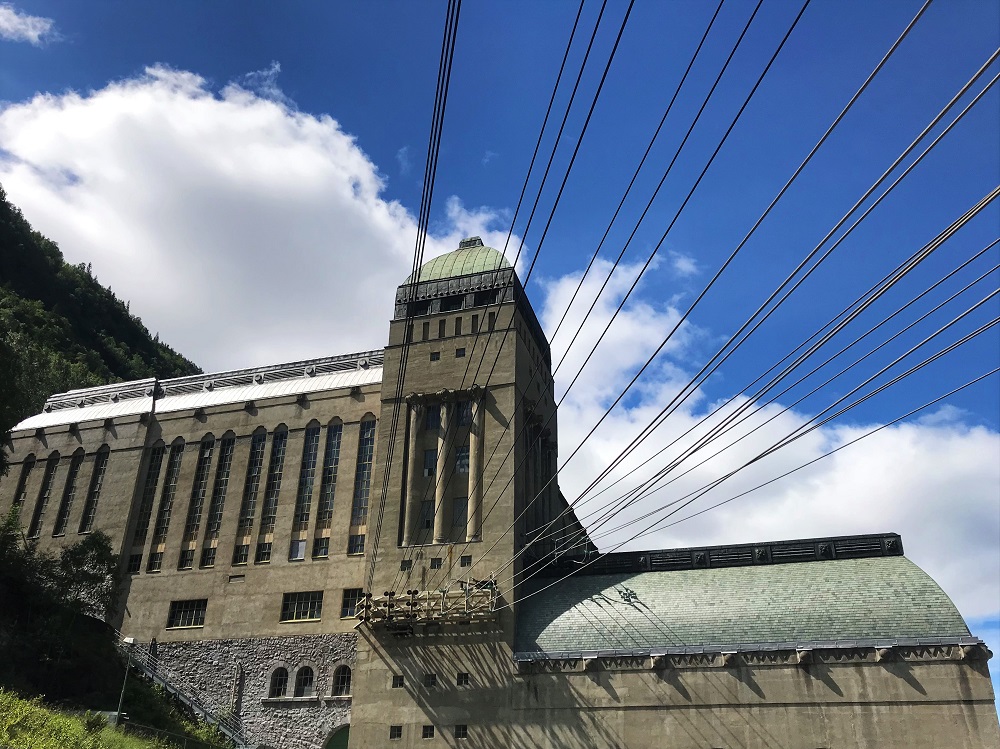
This industrial World Heritage Site in southern Norway is quite fascinating, as it’s about the production of artificial fertiliser. A process for manufacturing fertiliser was developed in the early 20th century by Norwegian scientists, and quickly implemented by the new Norwegian government. The process was very energy intensive, so three enormous hydropower stations were built. These three huge power stations were among the largest in the world at the time.
Entire towns were built from scratch to house workers for these new factories and power stations, and these towns still exist today. The scale of infrastructure is just staggering, as there’s apartment buildings for the workers and larger houses for the managers. Shops, cafes and cinemas, churches, and of course a rail link to connect the factories with a distribution network.
There’s also some interesting World War 2 history here as well. One of the by-products from fertiliser manufacturing is known as “heavy water“, a key component in nuclear reactions. After the Nazis occupied Norway, Allied leaders realised that Nazi scientists could use this heavy water in their nuclear weapons program. To prevent this from happening, a team of British and Norwegian commandos raided the area, blowing up factories and power stations. These raids were later made famous by the movie The Heroes of Telemark.
Royal Saltworks of Arc-et-Senans, France – World Heritage Site
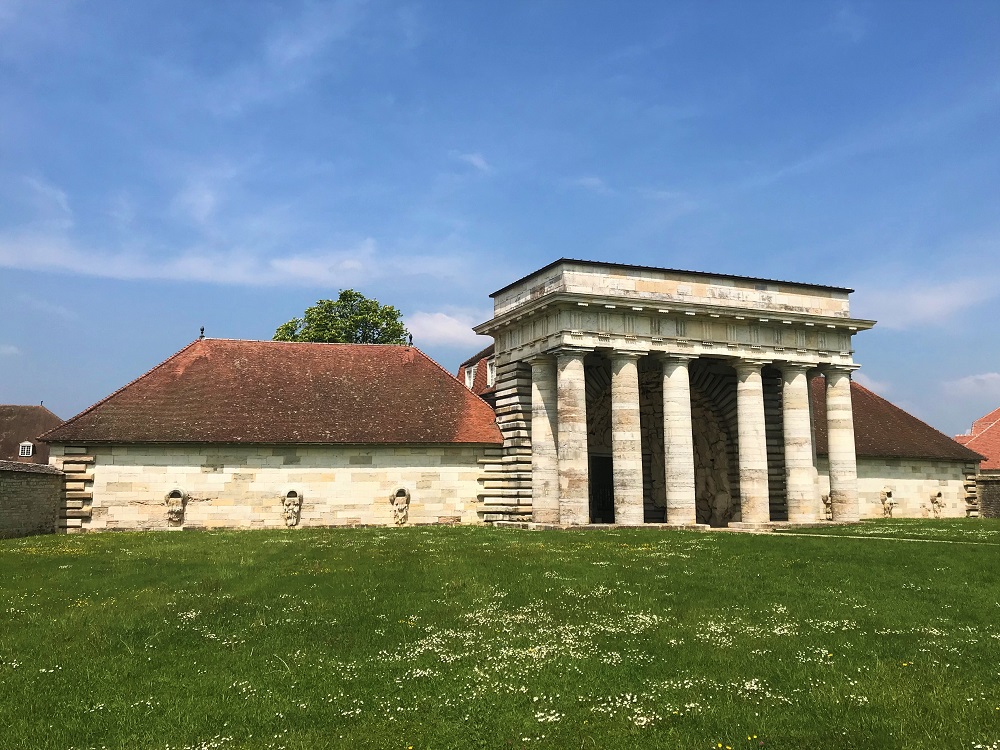
Salt is one of the world’s cheapest commodities. We add it to our food, we have it on our tables, and generally we don’t think twice about it. So it’s sometimes hard to believe that salt was once “white gold“, and one of the world’s most valuable trade goods. This World Heritage Site, located in the Franche-Comte region of eastern France, covers two separate saltworks that date from the late 18th century.
Salt had been produced in the area for centuries, but France’s booming population meant that a new approach was required. To increase production of the precious good, Louis XV decreed that a new saltworks would be built at Arc-et-Senans, combining all of the existing small production facilities into one large one.
Architect Claude Nicolas Ledoux developed a grand Enlightenment-era design for the new Royal Saltworks. He included a huge planned city around the central production building, and the plans still look very impressive even today. The saltworks building was completed, but the French Revolution broke out before the city could be built. Production continued until 1895, but these days there’s just a beautiful, grand saltworks, in a very small town. Fascinating!
Van Nellefabriek, Netherlands – World Heritage Site
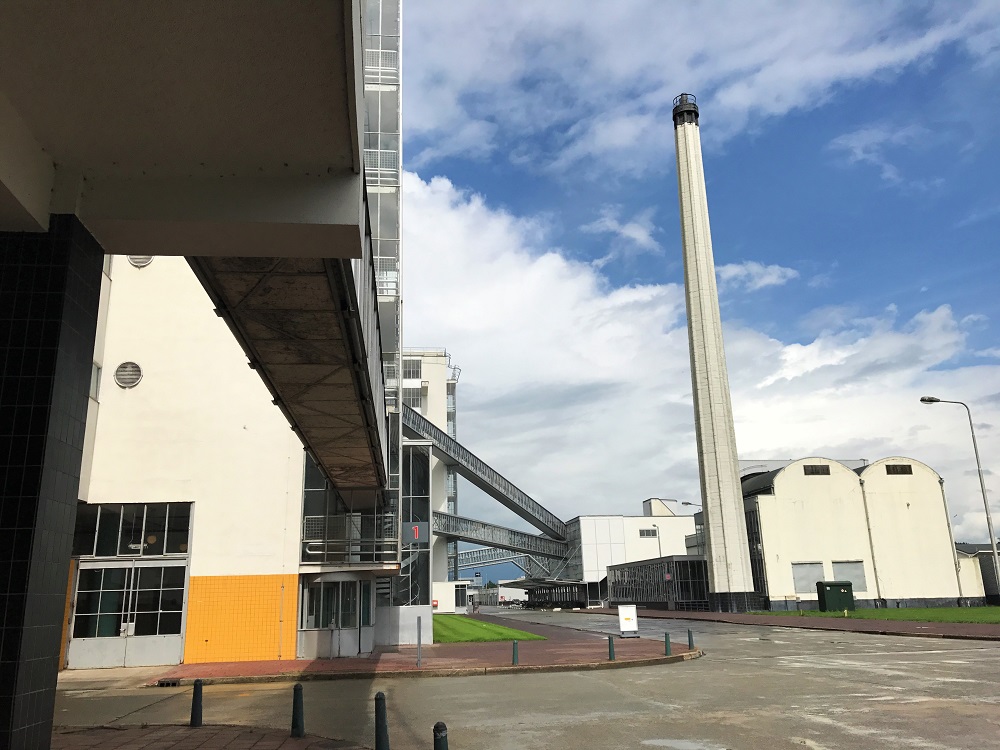
Van Nellefabriek, or the Van Nelle Factory, is a beautiful World Heritage site. It’s located in the city of Rotterdam in the Netherlands, and is an incredible example of modern architecture. Built largely of steel and glass, it opened in 1931 as the main production facility of the Van Nelle company, making consumer goods like coffee, tobacco, tea, and chewing gum.
The building is still an active workplace even though the Van Nelle company has moved on, and it’s currently home to many trendy architecture and design companies. I absolutely loved touring this building, since you can really see how it inspired later factories and office buildings. It was an early adopter of the “curtain wall” technique, where internal columns support the weight of the building rather than the exterior walls. This means that exterior walls can be decorative, and built of light materials like glass.
And I just love the brilliant white and silver colour scheme. It gleams in the sun, and symbolises what was the hopeful new era of the 1920s. It’s certainly not what you’d imagine when you think of factories or World Heritage Sites, but it’s genuinely a fantastic spot to visit.
Verla Groundwood & Board Mill, Finland – World Heritage Site
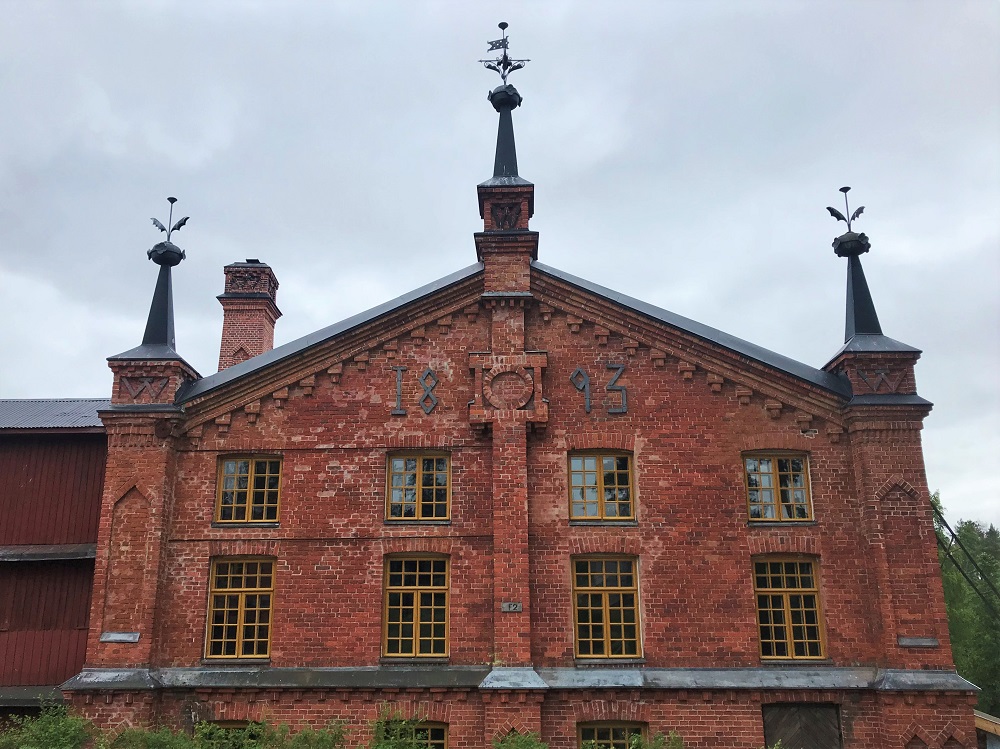
A World Heritage cardboard factory almost sounds like a punchline from The Simpsons, but I can assure you it’s not! It’s the Verla Groundwood and Board Mill, a charming brick factory complex in southern Finland. Dating from the 19th century, it’s an outstanding example of similar mills that once existed all across Scandinavia.
This mill is on the World Heritage List because it’s exceptionally well preserved. Production finished in 1964, and it It ceased operating in 1964 and was quickly converted into a museum of board mill technology. The tour here was quite fascinating, as it showed you the whole process. Logs were brought in, pulped, glued together and then cut into sheets of cardboard. These sheets were then exported to Russia, America, and Europe as well. The cardboard was used for a variety of purposes, from boxes to hardback book covers.
There’s a small village around the mill too, with apartments for workers and a large ornate house for the owner. It’s a nice and peaceful spot, and interesting to see a process I was completely unfamiliar with!
Tomioka Silk Mill, Japan – World Heritage Site
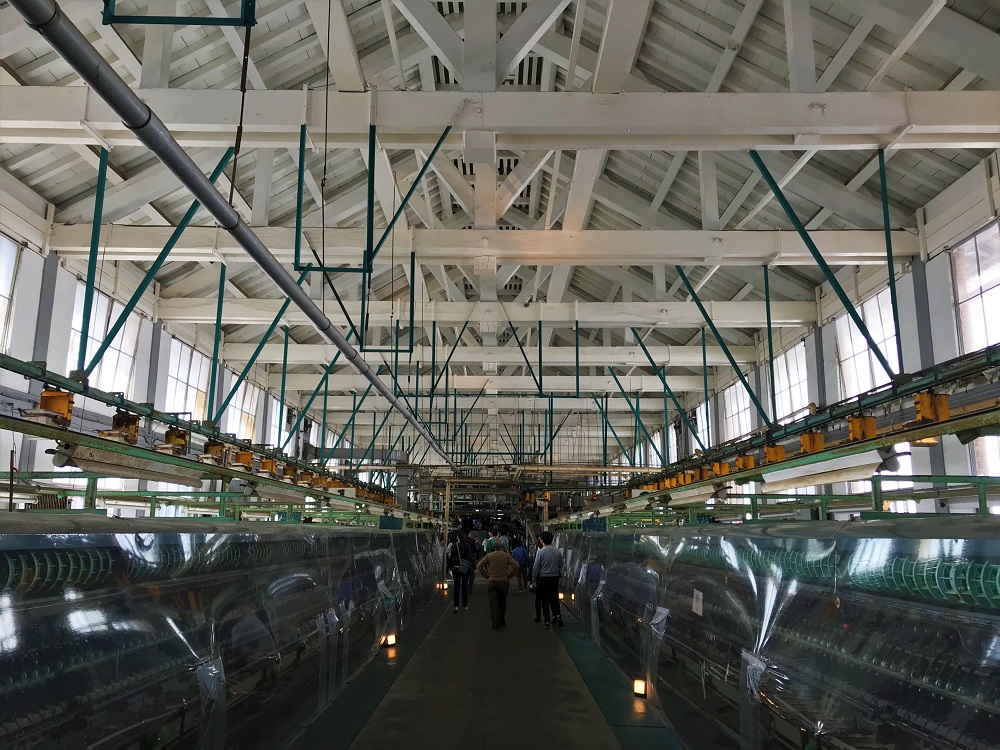
Located in central Japan, northwest of Tokyo, Tomioka Silk Mill opened in 1872. At the time, it was the world’s largest and most modern silk-processing factory. Built by Japanese workers using imported French technology, it was a major step in Japan’s modernisation and operated continuously until 1987.
Every step of raw silk production is housed within the Mill complex. There’s facilities for breeding and raising silkworms, along with a huge reeling plant for unwinding the cocoons and processing them into raw silk. The complex also contains associated buildings like a power plant, and housing for managers and workers. Naturally, there’s also recreation facilities too.
The buildings on site are all constructed using bricks around a timber frame, which I found fascinating! It’s a very unusual construction style for Japan, which at the time built almost exclusively out of timber. The silk-reeling plant building was also the first building in Japan to use a truss roof.
It’s a really interesting site, and one that we loved visiting. It also marks a pivotal point in Japan’s history. Sites like this fired the Meiji industrial revolution, as European demand for silk made Japan very rich. But hunger for raw materials and resources also drove Japanese expansionism in the 20th century, ultimately leading to World War 2. Quite a sobering thought.
Conclusion
So that’s our guide to the best Industrial World Heritage Sites. There are still several more that we haven’t seen, including some fascinating sites in Chile and Indonesia that we can’t wait to see. But until then, these industrial World Heritage Sites will have to do.
Have a browse around the site for other great World Heritage content, including the 7 Best UNESCO World Heritage Gardens, our guide to the World Heritage Sites of Delhi, and the beautiful World Heritage Sites of Tuscany.
And as always, be sure to follow us on Facebook and Subscribe to our YouTube channel!
